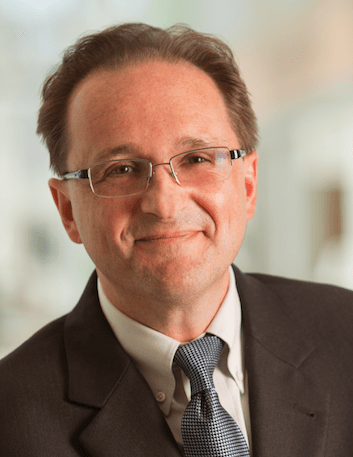Vanquishing Viruses
January 24, 2017
First-in-the-nation trial will use technology to target opportunistic infections
Innovations in Cancer - Winter 2017 - View Full PDF
 Marcos de Lima, MD
Marcos de Lima, MDOpportunistic viral infections remain a significant risk after hematopoietic stem cell transplantation (HSCT). Current antiviral therapies are often inadequate to combat these infections, putting both the graft and the patient at risk.
“It’s an ongoing problem,” says Marcos de Lima, MD, Director, Bone Marrow Transplant, UH Cleveland Medical Center; Director, Hematologic Malignancies and Stem Cell Transplant Program, UH Seidman Cancer Center; Professor of Medicine, Case Western Reserve University School of Medicine. “Today, we use more mismatched transplants using haploidentical (mismatched related donors) or cord blood. It’s great because you can potentially transplant everybody, but the limitation is that there are more significant issues during recovery after transplant and more of these opportunistic infections.”
To address this problem, Dr. de Lima and his colleagues at UH Seidman Cancer Center and the Case Comprehensive Cancer Center at Case Western Reserve University will soon launch a first-in-the-nation cell therapy trial aimed at treating four common viral infections in HSCT patients.
DISTINCTIVE DEVICE
The trial relies heavily on an automated cell processing device called the CliniMACS Prodigy system, which uses a gamma interferon capture system. First, the team will secure cells from the patient’s donor or the donor’s family member. Then the cells will be exposed to the particular virus antigen. Viruses to be included in this trial include cytomegalovirus, Epstein-Barr, adenovirus and BK. Through a series of magnetic interactions within the Prodigy device, only cells that respond to the viral antigen will secrete the gamma interferon and be captured.
“We will be able to separate out these particular T lymphocytes with the Prodigy system,” Dr. de Lima says. “At the end, you end up with a small, but very strong, selected population of T cells. The basic assumption is that because the donor had those T cells, he or she must have been previously exposed to that virus. Because of this, then you can prevent off-target activity, such as graft versus host disease. The T cells are very specific against the virus, so they are less likely to cause off-target damage.”
Creating virus-specific T cells to restore immunity and combat viral infections is in itself not a new idea. Cell-based immunotherapy, using adoptive T cell transfer, has been shown to be safe and effective in the treatment of viral infections after HSCT, including adenovirus, cytomegalovirus and Epstein-Barr.
The difference is in the speed and convenience provided by the Prodigy system.
“This is not a new idea, but the automated approach makes it very user-friendly,” Dr. de Lima says. “In the past, an approach like this was very labor-intensive. Technology now makes it easier, which we think will be a big advantage for our HSCT patients.”
He predicts that this is just one of the major cell therapy advances cancer patients will see from UH Seidman Cancer Center in the days and weeks ahead.
“Centers like ours that have cell processing and bone marrow transplant programs are well-positioned as the science develops and expands,” he says. “In the future, we expect to see a lot more combinations of cell therapies and drugs. For us, embracing these projects will be almost second nature.”
For more information on this pending clinical trial at UH Seidman Cancer Center, please contact Dr. de Lima or Paolo Caimi, MD, at 216-844-0130.
Tags: Clinical Trials


